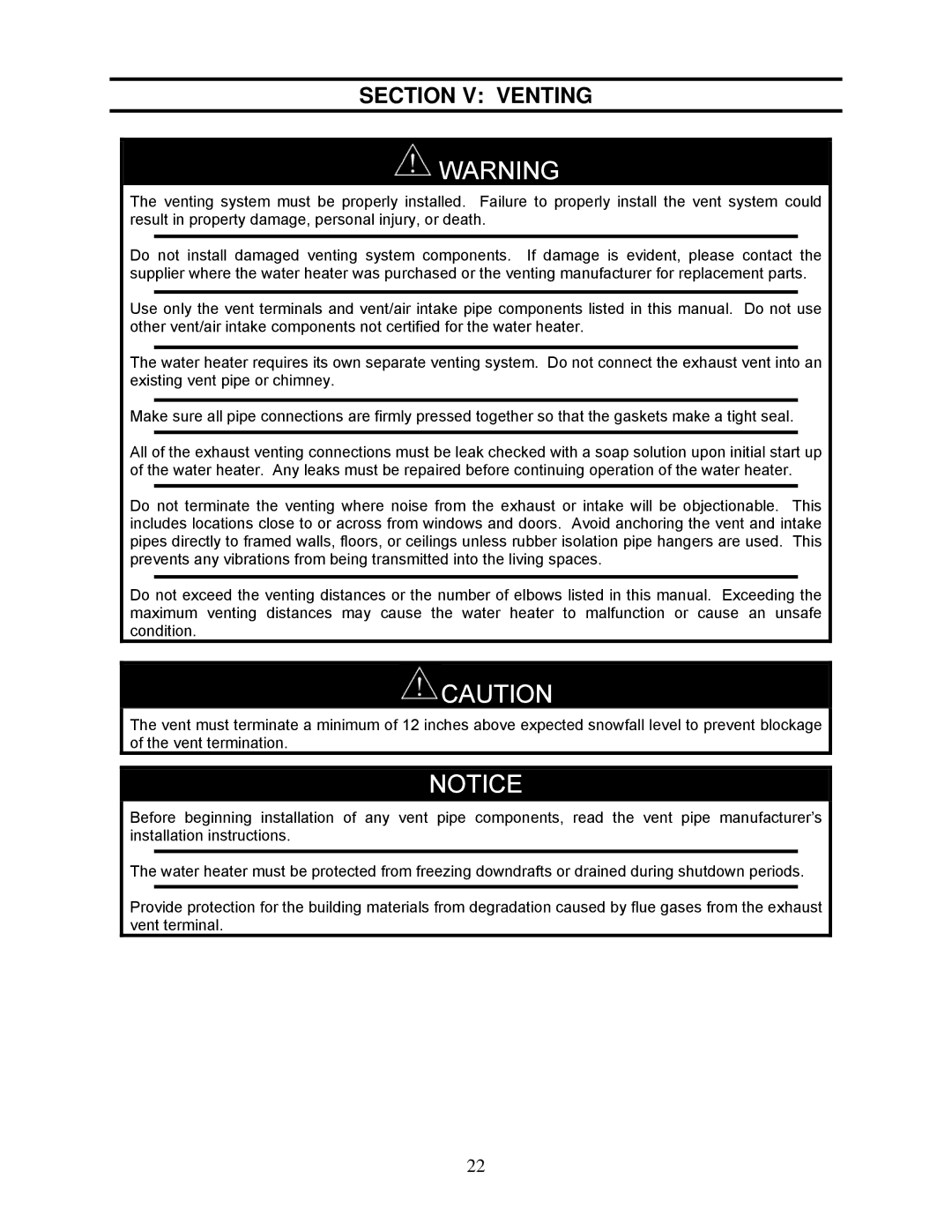
SECTION V: VENTING
![]() WARNING
WARNING
The venting system must be properly installed. Failure to properly install the vent system could result in property damage, personal injury, or death.
Do not install damaged venting system components. If damage is evident, please contact the supplier where the water heater was purchased or the venting manufacturer for replacement parts.
Use only the vent terminals and vent/air intake pipe components listed in this manual. Do not use other vent/air intake components not certified for the water heater.
The water heater requires its own separate venting system. Do not connect the exhaust vent into an existing vent pipe or chimney.
Make sure all pipe connections are firmly pressed together so that the gaskets make a tight seal.
All of the exhaust venting connections must be leak checked with a soap solution upon initial start up of the water heater. Any leaks must be repaired before continuing operation of the water heater.
Do not terminate the venting where noise from the exhaust or intake will be objectionable. This includes locations close to or across from windows and doors. Avoid anchoring the vent and intake pipes directly to framed walls, floors, or ceilings unless rubber isolation pipe hangers are used. This prevents any vibrations from being transmitted into the living spaces.
Do not exceed the venting distances or the number of elbows listed in this manual. Exceeding the maximum venting distances may cause the water heater to malfunction or cause an unsafe condition.
![]() CAUTION
CAUTION
The vent must terminate a minimum of 12 inches above expected snowfall level to prevent blockage of the vent termination.
NOTICE
Before beginning installation of any vent pipe components, read the vent pipe manufacturer’s installation instructions.
The water heater must be protected from freezing downdrafts or drained during shutdown periods.
Provide protection for the building materials from degradation caused by flue gases from the exhaust vent terminal.
22
